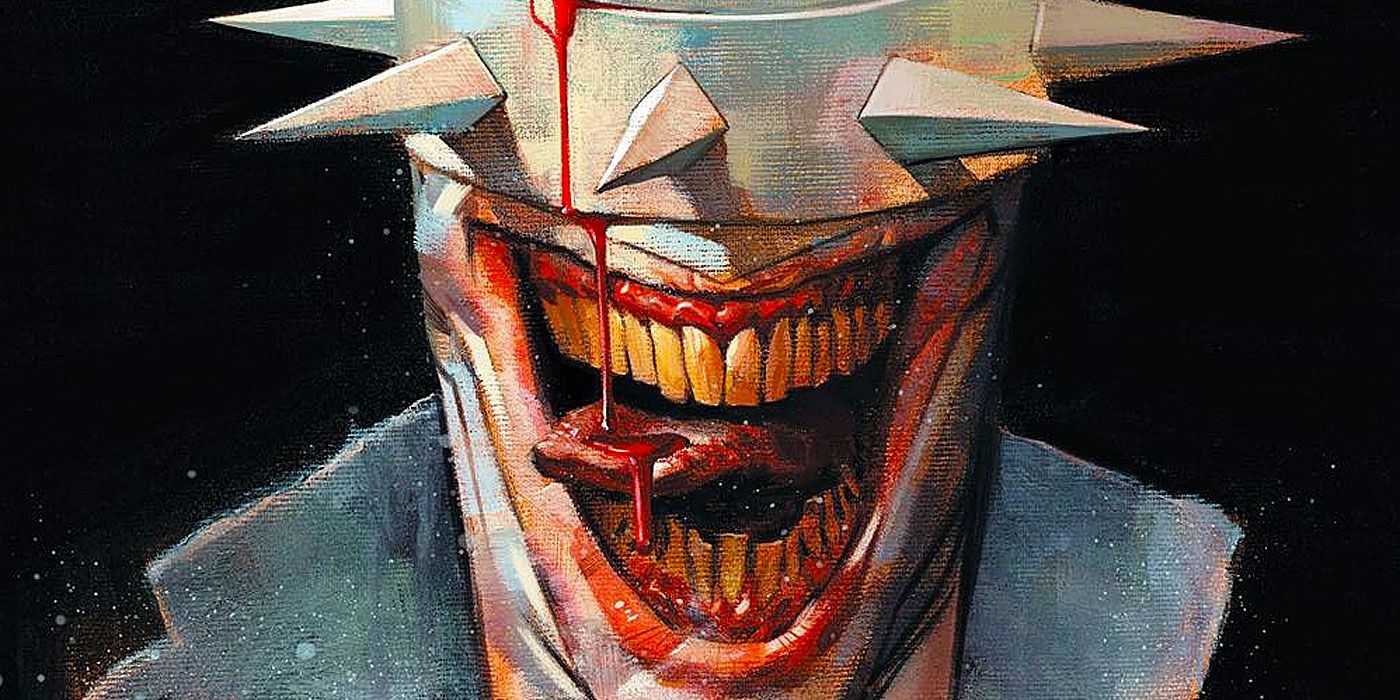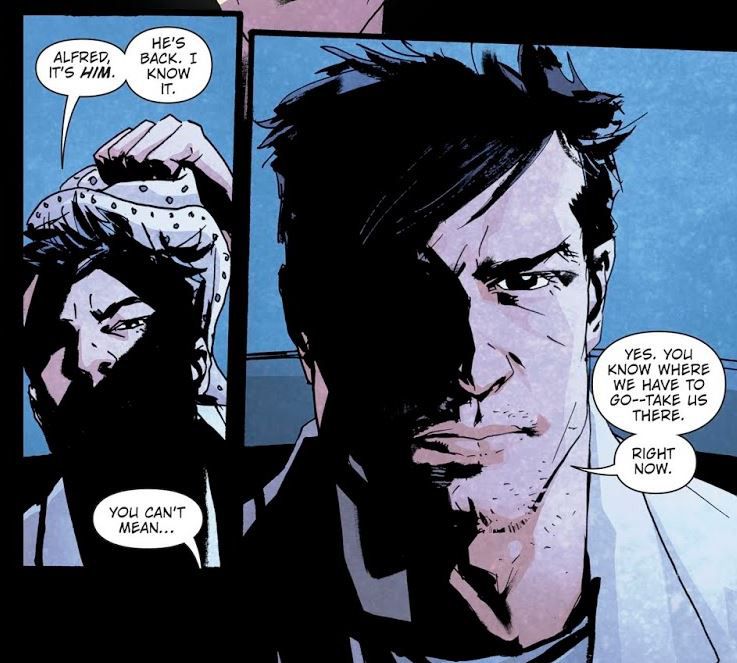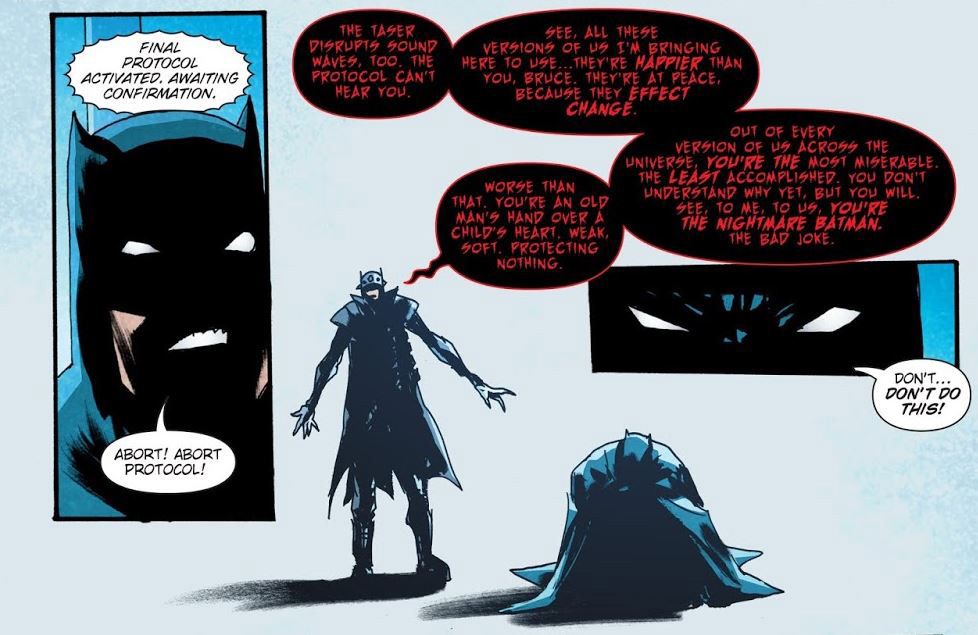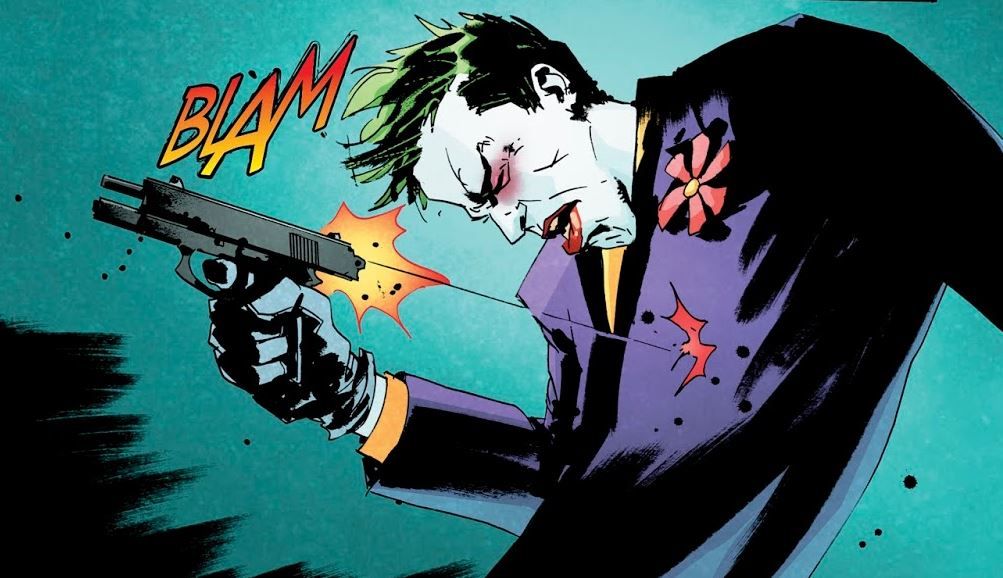WARNING: The following contains spoilers for the DC Comics' series The Batman Who Laughs, in stores now.
The Joker might be Batman's greatest hero.
We're fully aware that this is a controversial stance. Nonetheless, the Joker is Batman's biggest fan and hero, but his fandom comes at the expense of Bruce Wayne. Though brooding is a characteristic attribute of Batman and Bruce, the Joker has a polarizing impact on the billionaire's two identities. In fact, the Joker is a hero to the Batman mantle.
We're not making a role-reversal case for the Joker and Batman's respective roles in Gotham City. Joker is the villain and Batman is always the hero. Unless, of course, we're talking about parallel universe versions of each character, because the vast multiverse gets messy. Then, of course, there's the Batman Who Laughs, who possesses the worst and best attributes of Batman and the Joker. It might seem peculiar, but the Joker and Batman need each other to exist. Though the Joker has saved Batman a couple of times by sparing his life, the Clown Prince of Crime continuously saves Batman by being a menacing villain.
Simply by existing and being the villain he is, the Joker gives the Bat countless reasons to continue to wear the cape and cowl. One could argue that, even without the Joker, Batman has plenty of reasons to don the cape and cowl. There are plenty of other noteworthy villains in Gotham City, after all. However, the longstanding duality between the hero and villain is intentional. Even in Batman's infancy as a hero, the Joker caused mayhem. To keep an age-old hero like Batman from retiring, he needs a menace of equal longevity. Joker is that menace.
The Joker might be able to find another vigilante to torment if Batman ceased to exist. Without the ambition of tracking down a villain who just won’t stop, Batman can’t exist without Joker. In that regard, Joker’s horrid acts continuously motivate Batman into being a hero. Like any hero origin story, there’s an ample amount of tragedy in Bruce Wayne’s backstory, especially with Batman: A Death in the Family and Death of the Family. And we all know Joker had a heavy role in those tales.
If you need a recap of Death in the Family, the Joker coerced Jason Todd's biological mom into turning him over to him. Then, the clown killed Jason and his mom. Granted, the Joker can't take credit for this one because comic readers did vote for Jason's death. Still, this arc didn't simply solidify Joker’s standing as the Bat’s biggest villains.
Adding more pain to the brooding character's arc, the Joker killed and hurt everyone close to Batman in Death of the Family (including the various tie-in plots). These aren't the only times Joker has brought the Bat out of hiding and killed parts of Bruce in the process. But these arcs ensured that Bruce Wayne would never put down the cape and cowl as long as the Joker still plagued Gotham.
Sure, Batman has taken brief and extended hiatuses since Jason first died, but the Joker or another villain of merit always brings him back. By periodically killing one of the Bat-kids, Joker ensured that Batman would continue to fight crime to prevent what happened to Jason from happening to another kid. But Bruce Wayne is the one who had to cope with the emotional toll of the tragedy.
All of the Joker's murders, robberies and various other crimes push the superhero side of Bruce to continue his pursuit of justice in a corrupt city. Though the Joker's incessant role as his main antagonist sustains the symbol of hope that Batman stands for, the Joker also hurts the civilian side of Bruce.
The same way the Joker side of the Batman Who Laughs picked at Bruce Wayne's insecurities, Joker uses his malicious attacks to hurt and kill the people closest to Bruce Wayne. Obviously, that deteriorates Bruce's civilian lifestyle, because even when he isn't wearing his costume, he still has the mindset of Batman.
Joker’s crimes weirdly encourage Batman to continue to pursue him. However, every personal crime the clown commits against Batman deteriorates a part of Bruce. Even after killing his family members, tormenting them and leveling parts of the city, Batman still hasn’t killed the Joker. Even when given multiple opportunities to kill him, he hasn’t. And that’s because Bruce knows that he needs his antagonist to continue to be Batman.
So, when given the opportunity to let the Joker bleed out again at the beginning of the Batman Who Laughs, he prompts Alfred to save him. The Bat doesn’t kill unless he needs to (unless extenuating circumstances are at play). Beyond his moral code in regard to conserving life, The Batman Who Laughs shows that Batman is aware that he needs the Joker -- he recognizes the need for his nemesis.
Technically, the Joker saved Batman in a more literal sense in the first issue of The Batman Who Laughs. When he shot himself in the heart, he released a super-toxin that gave Batman an advantage. However, this also Jokerized the real Batman. As much as this panel gave Batman an edge in fighting the Batman Who Laughs, it also started to kill him.
Similar to how they need each other to exist, the Batman Who Laughs represents the death of their two identities. As the real Batman descends into his own Jokerized version of himself, we see how the two lethal identities start to kill Batman. While he isn’t physically dying, his desire to make himself like the Batman Who Laughs shows us how much Batman has deteriorated from his former self. He’s destroyed the Joker-toxin antidote, which makes him less and less like Batman.
However, he still insists on tracking down the real villains in the comic series. His passion to protect Gotham still makes him Batman. This passion to uphold peace naturally kills the Jokerized part of him. While the two identities coexist within him, they’re also dying together. There’s a fine balance between good and evil in Gotham. By inhabiting the personified versions of good and evil, the Batman Who Laughs shows us the gradual death of the Joker and Batman.
Their divergent moral codes balance the two characters in a way. While Batman's existence doesn't always inherently motivate the Joker to cause chaos, the Joker keeps Batman alive. Not the person behind the mask, but the symbol. They’re two separate entities. Though Joker’s vile acts uphold Batman’s moral code, they still embody evil and good respectively. But when they’re together, it spells the death of both characters.




